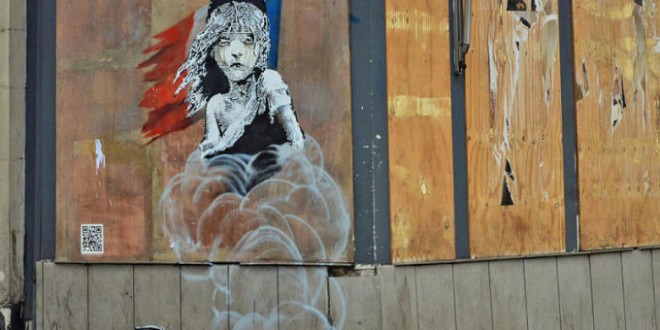The long-running secrecy behind the identity of British street art legend Banksy may have finally come to an end.
Researchers from Queen Mary University of London and Texas State University say they have unmasked the man behind the darkly satirical, anti-consumerist street art that has become famous around the world. Using a criminological method known as geographic profiling, they were able to narrow their search to one likely candidate–a man named Robin Gunningham.
Geographic profiling was pioneered by former police officer Professor Kim Rossmo, now at Texas State University and a co-author on this study, for use in investigations of serial crime. It uses the spatial locations of crimes to make inferences about the criminal’s anchor point – usually a home or workplace.
The technique has been adapted to study patterns of infectious disease by lead author Dr Steve Le Comber from QMUL’s School of Biological and Chemical Sciences.
“In a disease outbreak, our model can use the addresses of infected individuals to find the sources of the outbreak,” said Dr Le Comber. “Because this takes just minutes on a computer, investigators can potentially stop outbreaks before they spread by putting in place control procedures that are likely to be most effective.
In the new study, the authors collected precise coordinates from 140 locations using publically available data and information already in the public domain. The paper’s importance lies in the fact that – because terrorists often also engage in low level activities such as vandalism, graffiti, anti-government leaflet distribution and banner posting before major attacks – the model could potentially be used to help uncover terrorist bases before more serious incidents occur
The research article further demonstrates the flexibility of geographic profiling, which the team have now applied to a wide range of geospatial investigations including people, animals and plants.
Ongoing research in the Le Comber group is looking at using geographic profiling in disease outbreaks such as malaria and TB.
Agencies/Canadajournal
 Canada Journal – News of the World Articles and videos to bring you the biggest Canadian news stories from across the country every day
Canada Journal – News of the World Articles and videos to bring you the biggest Canadian news stories from across the country every day




Wow, Robin Gunningham was named as far back as ’08. This really doesn’t add anything to what’s already known.